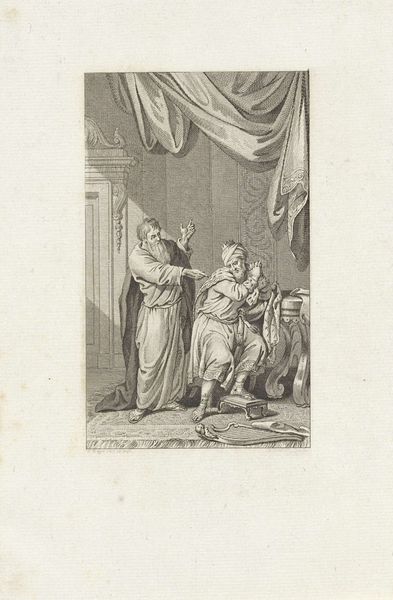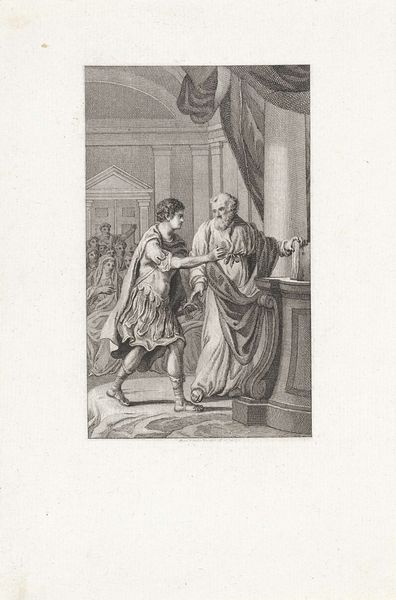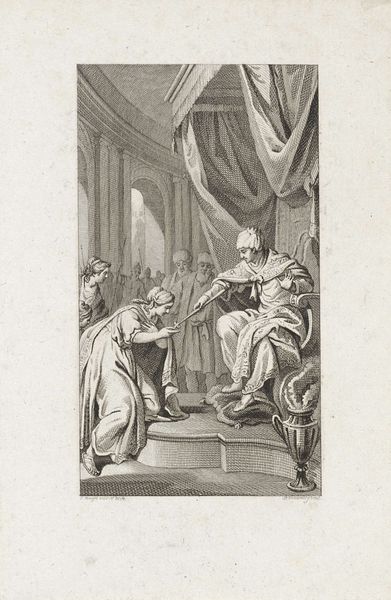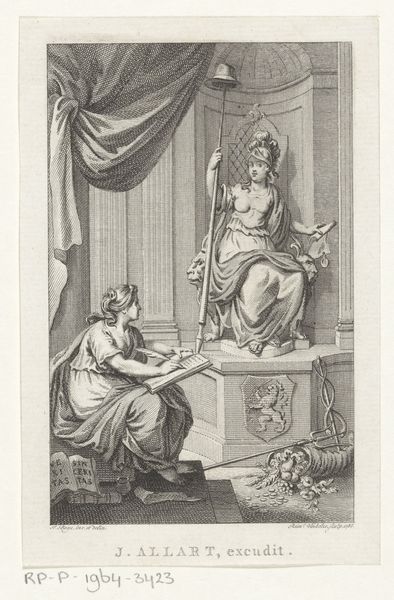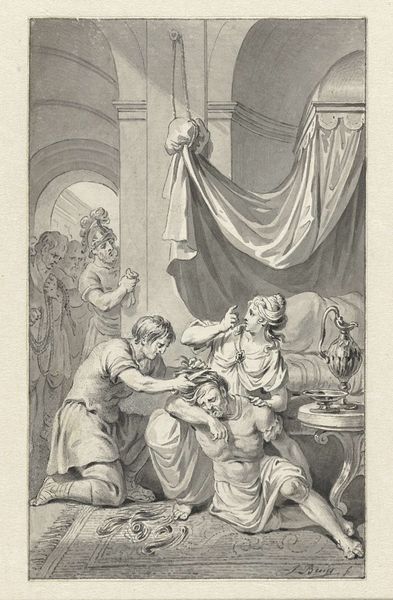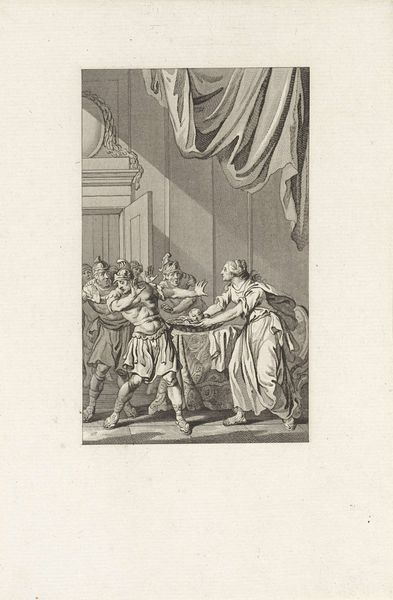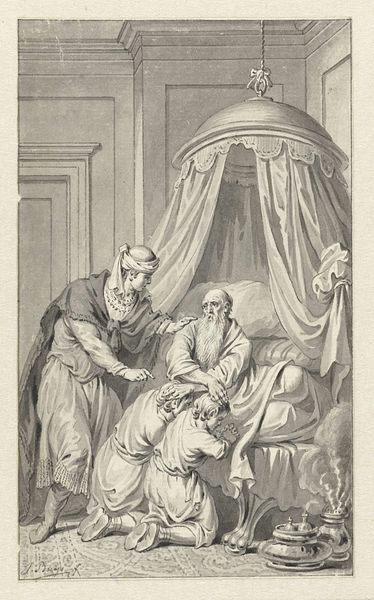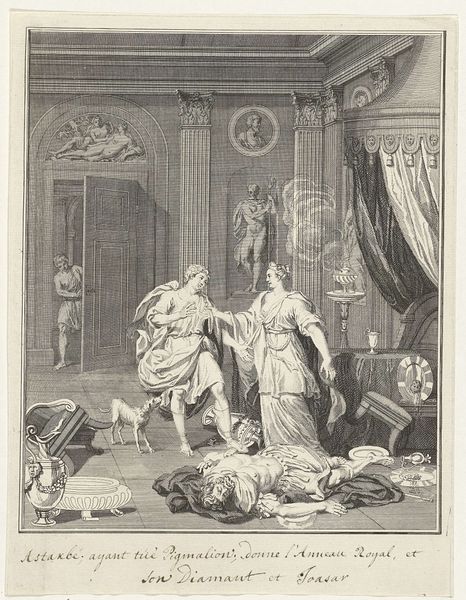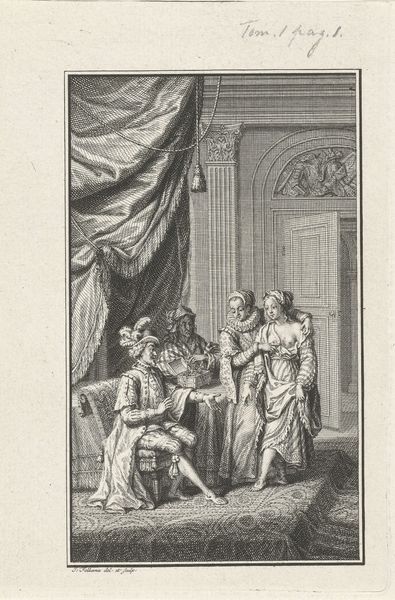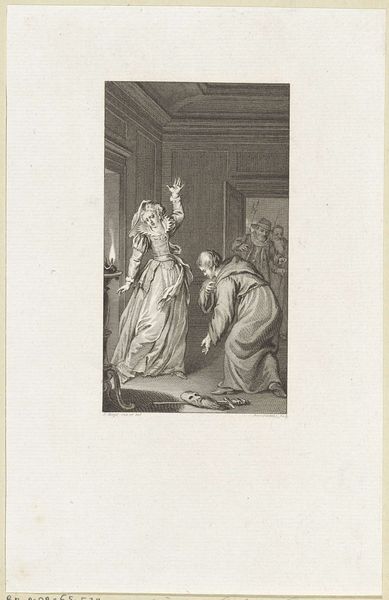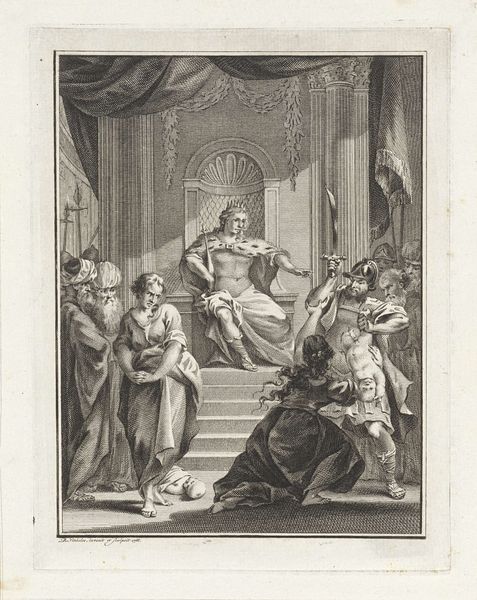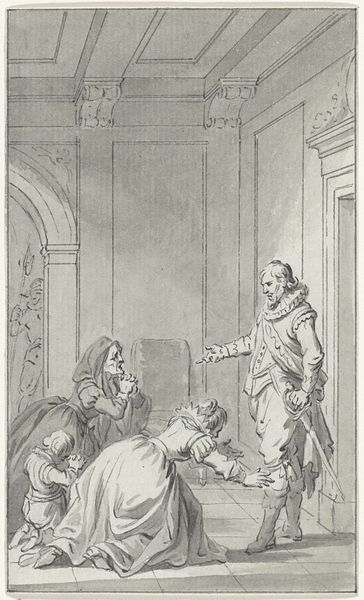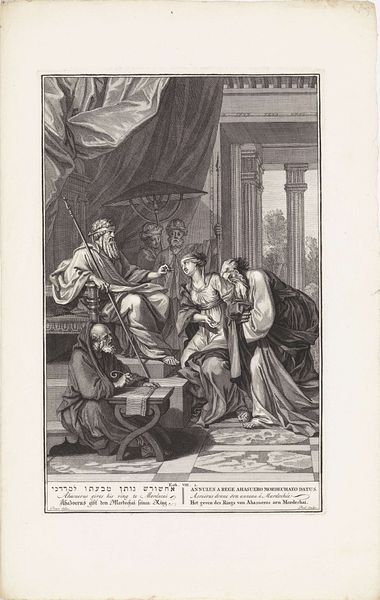
Dimensions: height 149 mm, width 88 mm
Copyright: Rijks Museum: Open Domain
Curator: This is "David en Nathan," a drawing rendered in ink on paper, created sometime between 1734 and 1801 by Jacobus Buys. Editor: The drama just leaps off the page, doesn't it? All those flowing fabrics, that almost theatrical pose from the figure on the left… It's Baroque sorrow in monochrome! Curator: Absolutely. Buys captures a really pivotal scene here—Nathan the prophet confronting King David about his sin with Bathsheba. It’s a moment laden with moral weight. The visual language, the gestures, it’s all carefully constructed to convey that gravity. Editor: Tell me about it, that finger pointing is cutting! But look at David; you see how he shrinks away from Nathan’s gaze? I think it is a subtle but powerful choice—he shows David in turmoil as a man brought to account, a potent message on the responsibilities inherent to power. Curator: It’s also fascinating to consider Buys’ choice to depict this story during that period. In the late 18th century, ideas around moral leadership and accountability were really gaining momentum, challenging traditional power structures. I would argue that this depiction fits in perfectly. Editor: Yes! We shouldn't overlook the medium. There's something about ink that brings immediacy, a direct connection with the hand of the artist. It mirrors the directness of Nathan’s challenge. There's little room for softening or misinterpretation with a narrative piece such as this, right? Curator: Precisely! And by stripping it down to ink, Buys heightens the raw emotion, the vulnerability, it creates a striking interplay. Editor: Looking closer at the composition, the regal architecture creates a stage upon which the conflict of conscience is being played out—this creates a very intimate performance about power dynamics. Curator: Ultimately, I find Buys' creation prompts the questions of who we listen to when confronted with uncomfortable truths and whether moral courage can overcome any barrier, even one between a prophet and his King. Editor: This image lingers; a haunting look at transgression and, hopefully, redemption. Art provoking these fundamental questions—that’s when it really shines, I feel.
Comments
No comments
Be the first to comment and join the conversation on the ultimate creative platform.
